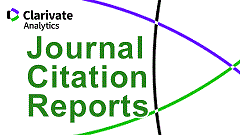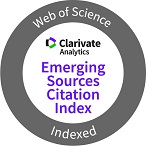The impact of rating classifications on stock prices of Brazilian companies
Keywords:
Credit rating, Market efficiency, Event study, Brazilian capital market, Rating announcementsAbstract
Purpose. This paper aims to identify if there is an impact of the rating announcements issued by the agencies on the returns of the stocks of Brazilian companies listed on Brasil Bolsa Balcão, from August 2002 to August 2018, identifying which types of announcement (upgrade, downgrade or the same initial classification) cause variations in prices around the date of disclosure of the rating.
Design/methodology/approach. The event study methodology was applied to verify the market reaction around the announcement dates in a 21-day event window (−10, +10). The market model was used to calculate the abnormal returns (ARs), and subsequently, the accumulated ARs.
Findings. The hypotheses tests allowed to verify that the accumulated ARs are different, before and after the three types of rating announcements (upgrades, downgrades and the same classification); in upgrades, the mean of accumulated ARs increases in the days before the event, while in downgrades, this increase occurs after the event. This paper concluded that the rating announcements have an impact on the return of stock of the Brazilian market and that the market reaction occurs most of the time before the event happens, which indicates that the market can anticipate the information contained in the changes in credit ratings.
Practical implications. The results have considerable implications for portfolio managers, institutional investors and traders. It facilitates investment decision-making in the face of rating classification announcements. Market participants can pay more attention to their investment strategies and asset allocation during periods of risk rating announcements. Additionally, traders can understand the form of investment strategy for superior earnings.
Originality/value. The importance of the study is related to the fact that the results may explain the causes of specific movements in the Brazilian financial market related to a source of information that may or may not be able to influence the decisions of the financial agents that operate in this market. The justification is centred on the idea that, for investors who somehow react to the announcements, it is relevant to understand the impact of rating classifications on companies, as access to such information allows for more conscious decision-making.
Downloads
References
Agarwal, S., Chen, V.Y.S. and Zhang, W. (2016), “The information value of credit rating action reports: a textual analysis”, Management Science, Vol. 62 No. 8, pp. 2218-2240.
Antônio, R.M., Sticca, R.M. and Ambrozini, M.A. (2018), “Quais eventos corporativos influenciam os retornos das ações? Um estudo baseado em bootstrap”, Revista Universo Contábil, Vol. l, pp. 28-45.
Bissoondoyal-Bheenick, E. and Brooks, R. (2015), “The credit risk-return puzzle: impact of credit rating announcements in Australia and Japan”, Pacific-Basin Finance Journal, Vol. 35, pp. 37-55.
Camargos, M.A. and Barbosa, F.V. (2003), “Estudos de evento: teoria e operacionalização”, Caderno de Pesquisas em Administração, Vol. 10 No. 3, pp. 1-20.
Campbell, J.Y., Lo, A.W. and Mackinlay, A. (1997), The Econometric of Financial Markets, Princeton University, Princeton, NJ.
Choy, E., Gray, S. and Ragunathan, V. (2006), “Effect of credit rating changes on Australian stock returns”, Accounting and Finance, Vol. 46 No. 5, pp. 755-769.
Elayan, F.A., Hsu, W.H. and Meyer, T.O. (2003), “The informational content of credit rating announcements for share prices in a small market”, Journal of Economics and Finance, Vol. 27 No. 3, pp. 337-356.
Fama, E.F. (1970), “Efficient capital markets: a review of theory and empirical work”, The Journal of Finance, Vol. 25 No. 2, pp. 383-417.
Finnerty, J.D., Miller, C.D. and Chen, R.R. (2013), “The impact of credit rating announcements on credit default swap spreads”, Journal of Banking and Finance, Vol. 37 No. 6, pp. 2011-2030.
Freitas, A.P.N. and Minardi, A.M.A.F. (2013), “The impact of credit rating changes in Latin America stock markets”, BAR – Brazilian Administration Review, Vol. 10 No. 4, pp. 439-461.
Galil, K. and Soffer, G. (2011), “Good news, bad news and rating announcements: an empirical investigation”, Journal of Banking and Finance, Vol. 35 No. 11, pp. 3101-3119.
Hu, H., Kaspereit, T. and Prokop, J. (2016), “The information content of issuer rating changes: evidence for the G7 stock markets”, International Review of Financial Analysis, Vol. 47, pp. 99-108.
Ismailescu, I. and Kazemi, H. (2010), “The reaction of emerging market credit default swap spreads to sovereign credit rating changes”, Journal of Banking and Finance, Vol. 34 No. 12, pp. 2861-2873.
Kenjegaliev, A., Duygun, M. and Mamedshakhova, D. (2016), “Do rating grades convey important information: German evidence?”, Economic Modelling, Vol. 53, pp. 334-344.
Luiz, I.G., Nascimento, M. and Pereira, L.C.S. (2008), “Impacto do gerenciamento de resultados no retorno anormal: estudo empírico dos resultados das empresas listadas na Bolsa de Valores de São Paulo – BOVESPA”, Congresso USP de Controladoria e Contabilidade, 8, São Paulo.
Mackinlay, A.C. (1997), “Event studies in economics and finance”, Journal of Economic Literature, Vol. 35 No. 1, pp. 13-39.
Marandola, G. (2016), “InkLocal credit rating agencies: a new dataset”, Research in International Business and Finance, Vol. 38, pp. 83-103.
Micu, M., Remolona, E.M. and Wooldridge, P.D. (2006), “The price impact of rating announcements: which announcements matter?”, Working paper, Bank for International Settlements.
Morkoetter, S., Stebler, R. and Westerfeld, S. (2017), “Competition in the credit rating industry: benefits for investors and issuers”, Journal of Banking and Finance, Vol. 75, pp. 235-257.
Morseth, K. and Norgaard, P. (2011), “The impact of credit rating announcements on Norwegian equities: an event study on Oslo Stock Exchange”, Thesis, NHH Escola Norueguesa de Economia, Bergen.
Murcia, F.C.S., Murcia, F.D. and Borba, J.A. (2013), “The informational content of credit ratings in Brazil: an event study”, Revista Brasileira de Finanças (Online), Vol. 11 No. 4, pp. 503-526.
Ng, A. and Ariff, M. (2019), “Does credit rating revision affect the price of a special class of common stock?”, Borsa Istanbul Review, Vol. 19 No. 1, pp. 44-55.
Norden, L. and Weber, M. (2004), “Informational efficiency of credit default swap and stock market: the impact of credit rating announcements”, Journal of Banking and Finance, Vol. 38, pp. 2813-2843.
Soares, R.O., Rostagno, L.M. and Soares, K.T.C. (2002), “Estudo de evento: o método e as formas de cálculo do retorno anormal”, Encontro Nacional Dos Programas de Pós Graduação em Administração, XXVI, ANPAD, Salvador, p. 14.
Sylla, R. (2002), “Financial systems and economic modernization”, The Journal of Economic History, Vol. 62 No. 02, pp. 277-292.
Downloads
Published
How to Cite
Issue
Section
License
Copyright (c) 2021 Journal of Economics, Finance and Administrative Science

This work is licensed under a Creative Commons Attribution 4.0 International License.











